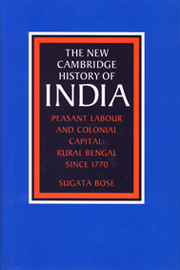1 - Ecology and demography
Published online by Cambridge University Press: 28 March 2008
Summary
Agrarian history at its most elementary level is the story of the interaction between land and people. The changing relationship between varying numbers of human beings and a fixed quantity of land has been from time immemorial a simple but crucial dynamic in agrarian developments. Historical reality has rarely been quite so simple as to be captured within a single relationship of a variable and a constant. Too many things other than population change, and land, despite its appearance, does not lack movement. Besides, the power of simplicity often misleads; it is all too easy to overemphasize the demographic factor in agrarian history.
Demography nevertheless is important, not necessarily as a causal determinant of the nature and course of agrarian developments but as a defining principle of parameters within which rural production occurs. Putting demography in its place is a daunting task. To the extent that historians have made contributions to grand theory in the twentieth century, studies of the long-term in pre-industrial history in which demographic cycles loom large have been, more often than not, the empirical vehicle for theoretical interjection. The Annales school of historians in particular has lent this genre both sophistication and the status of orthodoxy. What is more, the part of the world that is the subject of this book is precisely one of those many regions in the ‘developing’ world where the ‘problem’ of population is especially acute. In 1770, the starting-point of this study, the agrarian scene in Bengal was marked by the scarcity of people and vast stretches of uncultivated fertile land.
Keywords
- Type
- Chapter
- Information
- Peasant Labour and Colonial CapitalRural Bengal since 1770, pp. 8 - 37Publisher: Cambridge University PressPrint publication year: 1993

